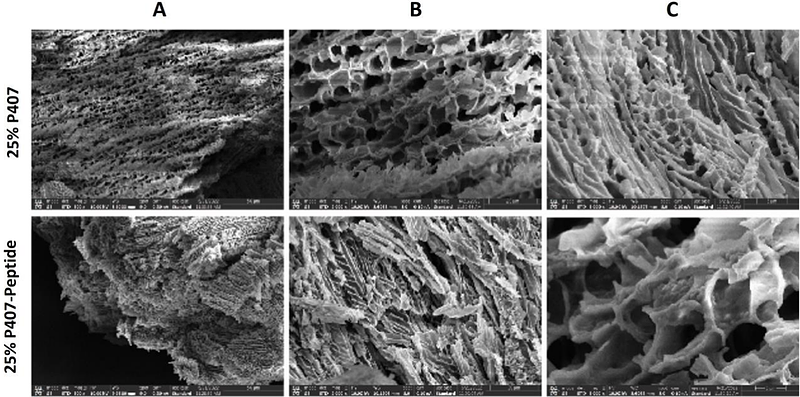Advancing Therapeutic Solutions: Poloxamer-based Thermosensitive Injectable Hydrogels containing a Self-assembling Peptide for In situ Gelation in an Osteoarthritis Murine Model

Advancing Therapeutic Solutions: Poloxamer-based Thermosensitive Injectable Hydrogels containing a Self-assembling Peptide for In situ Gelation in an Osteoarthritis Murine Model
Sayedipour, S.; Schomann, T.; van de Looij, S. M.; Rezaie, S.; Ramos, Y. F. M.; Vermonden, T.; van der Weerd, L.; Meulenbelt, I.; Cruz, L. J.
AbstractThis study presents the development and characterization of a novel thermosensitive injectable hydrogel designed to enhance the biomechanical properties of poloxamer 407 (P407) through the incorporation of a self-assembling peptide. The primary objective was to engineer a formulation that rapidly gels following intra-articular (i.a.) injection, exhibits improved mechanical strength, and enables sustained release of embedded therapeutic cargo. Gelation time assays demonstrated that the P407-peptide formulation solidified more quickly than P407 alone at equivalent concentrations. Rheological analysis revealed a 1.5kPa increase in storage modulus in the hybrid hydrogel, confirming improved mechanical integrity. In vitro biocompatibility was assessed using human chondrocytes, with MTS assays and LIVE/DEAD staining indicating no cytotoxicity across tested concentrations. To evaluate in vivo applicability, a near-infrared fluorescent (NIRF) dye was incorporated into the hydrogel and injected intra-articularly into an osteoarthritis (OA) mouse model. The labeled formulation allowed for successful tracking and demonstrated localized gelation, supporting its suitability for site-specific, sustained delivery. Overall, the P407-peptide hydrogel offers a promising platform for i.a. therapeutic applications, combining injectability, rapid thermoresponsive gelation, mechanical reinforcement, and controlled release behavior, making it well-suited for regenerative medicine and OA treatment.